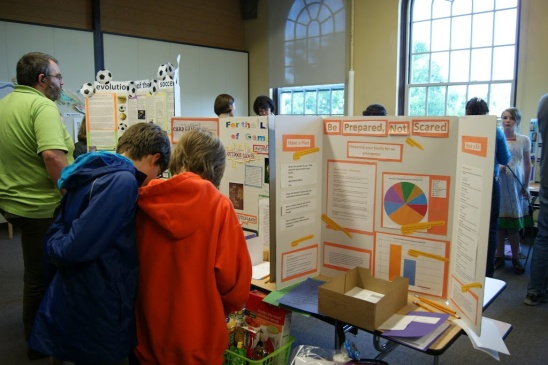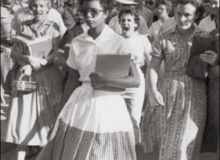Nate just completed his fifth grade project. He goes to an alternative school and this project has been part of the 5th grade promotion requirements since before the school was part of the school district, when it was *really* alternative. There is no structure, no guidelines, no grading rubric; the teacher told them “pick a subject and make a project”.
Nate originally wanted to do his project on wilderness survival, but figured that with the amount of time he had (and with his camping-phobic mother) he wouldn’t be able to do anything that people would want to learn about. So then it morphed into survival kits for camping trips kids his age would take – survival for kids. That was pretty narrow in scope so I suggested that he work on family emergency kits. He liked the idea and got started researching on the web and making lists.
The sites he referenced were 3days3ways.org which is a resource from the King County (where Seattle is) office of Emergency Management. He recommends this one because it has a calculator. You can plug in the number of family members you have and the number of days you’d like to be prepared for and it will give you the specific amounts of food and water you should have. When developing our family’s kit, he used the list at redcross.org for non-food emergency items like first aid items.
 When he was done we were left with a pretty complete kit. Nate’s advice to the parents at the presentation night was “an imperfect kit is better than no kit”. If you have some of the stuff gather it up in a box or back pack, keep a copy of your list with you and add and item to it each time you shop. It’s also suggested that you keep at least $200 in small bills with your kit. This is easy to accumulate if you put aside a few dollars a week. Thanks to his advice, I empty all of the singles from my wallet each night and put them with the emergency supplies. It may not be the full amount that is recommended, but if there were an emergency tomorrow I’m better off than I was yesterday.
When he was done we were left with a pretty complete kit. Nate’s advice to the parents at the presentation night was “an imperfect kit is better than no kit”. If you have some of the stuff gather it up in a box or back pack, keep a copy of your list with you and add and item to it each time you shop. It’s also suggested that you keep at least $200 in small bills with your kit. This is easy to accumulate if you put aside a few dollars a week. Thanks to his advice, I empty all of the singles from my wallet each night and put them with the emergency supplies. It may not be the full amount that is recommended, but if there were an emergency tomorrow I’m better off than I was yesterday.
As part of the project Nate and I wrote a survey. We wanted to know who had a kit, and what types of disasters people had survived. It was really, really interesting to read the responses and they really emphasized that being prepared for an emergency is important.
The survey was more popular than we thought, and due to the large number of responses we wound up having to pay to access them. So, since I have access to that account for a month, I created a Parenting Geekly reader survey. I’d love to know what you think about the site so that I can tailor the posts to things that interest my audience the most. I’d also like to start handling my own advertising soon (to hopefully ditch the giant Google ads) and some of the demographic info I ask for will help me secure quality, independent advertisers who fit the interests of this group.
More info and a link to the survey is on the Survey! tab at the top of the site. You can also click here to get to it.
And since I’m not above bribery…two respondents will each win an Amazon gift card. Once you fill out the survey return to the Survey! page and enter using the Rafflecopter widget.








